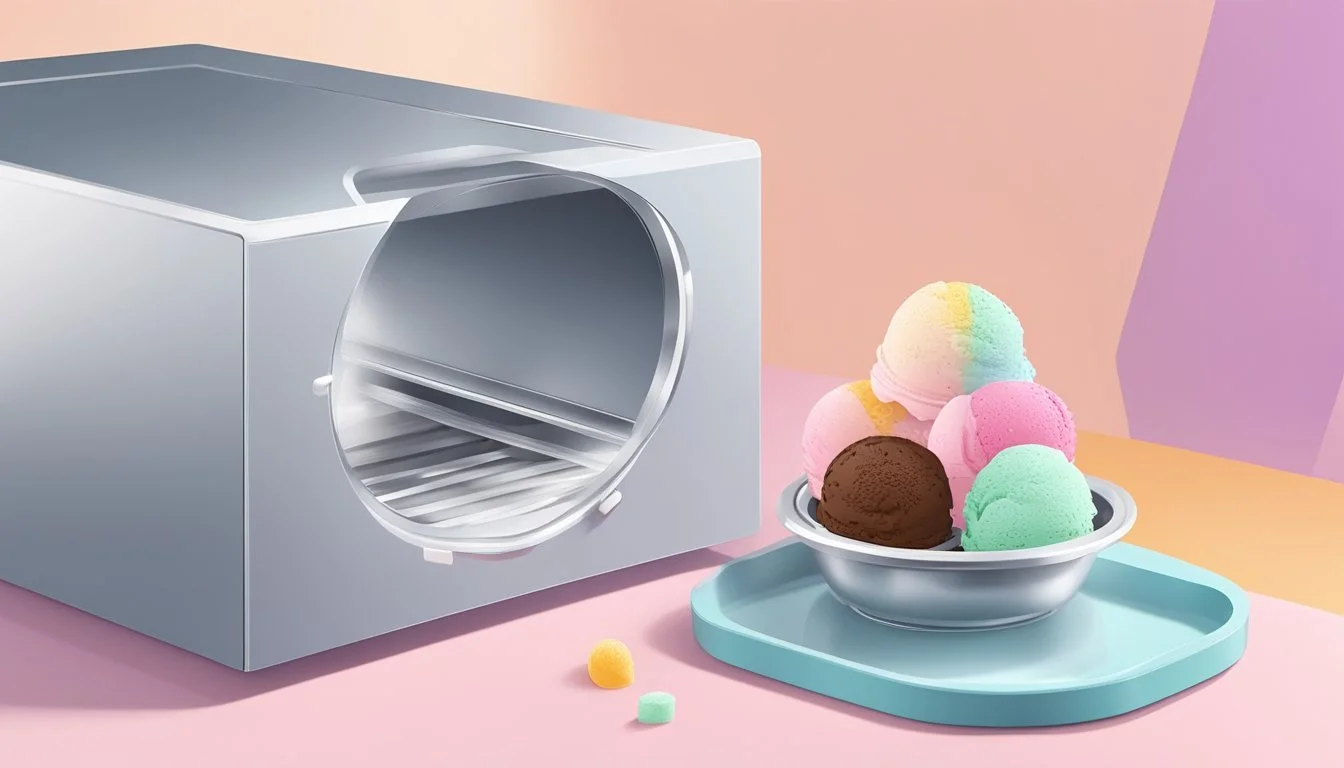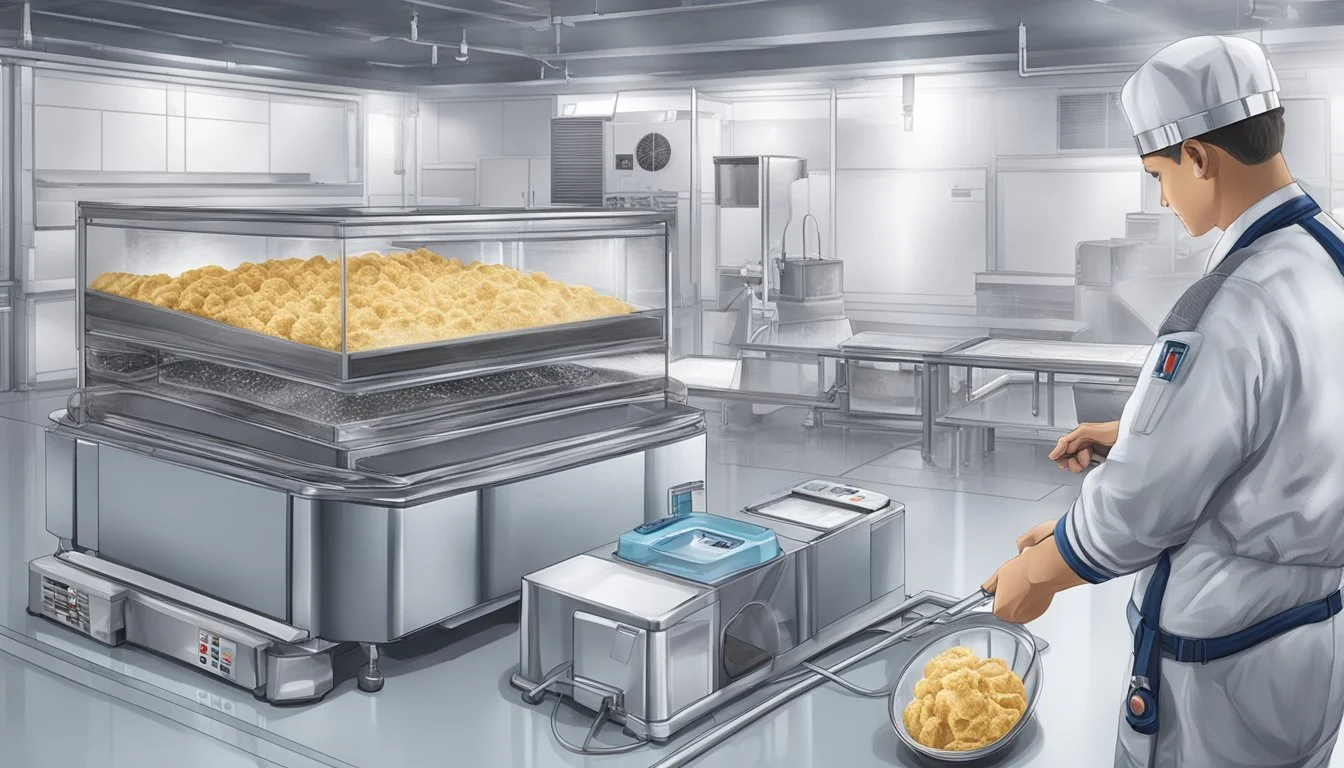How to Dehydrate Ice Cream?
A Step-by-Step Guide
Dehydrating ice cream (how long does cream last?) transforms the classic dessert into a shelf-stable treat without requiring refrigeration. Through a process typically known as freeze-drying, ice cream is subjected to low temperatures and a vacuum, removing its water content by sublimation. This results in a lightweight and porous product that retains the original flavor of the ice cream, often with a unique and crisp texture. Originally popularized as "astronaut ice cream" or "space ice cream" due to its inclusion in space missions, this novel form of ice cream has gained popularity for its convenience and novelty.
The process of dehydrating ice cream involves specialized equipment, such as a freeze dryer, which controls the pressure and temperature to achieve the necessary conditions for sublimation. While the technology and method may seem complex, it is rooted in basic scientific principles that revolve around the phase transitions of water. Commercially, this allows for the long-term preservation of ice cream while maintaining its taste and nutritional content, making it an intriguing option for camping, emergency food supplies, or simply as a unique snack.
Understanding Dehydration and Freeze-Drying
Dehydration removes moisture from food, concentrating flavors and extending shelf life, while freeze drying involves a more complex process known as sublimation.
Fundamentals of Dehydration
Dehydration is a preservation technique that removes moisture from food. It works by exposing the food to heat, airflow, or a combination of both, causing water to evaporate. This method inhibits the growth of bacteria and mold, allowing the food to be stored for long periods.
While dehydration relies on evaporation, freeze drying uses sublimation—the process where ice transitions directly into a gas without passing through the liquid phase. This occurs under vacuum pressure at low temperatures.
Freeze drying sublimates the ice within the product, resulting in a porous, dry item that retains its structure and nutritional content.
Overview of Ice Cream Preparation
Preparing ice cream at home involves combining culinary science and creativity, with special attention to ingredients and techniques. The following sections outline the key components and steps to make homemade ice cream.
Ingredients for Homemade Ice Cream Treats
Eggs: Eggs are a common ingredient, acting as an emulsifier to give ice cream a smoother texture.
Sugar: Essential for sweetness, sugar also lowers the freezing point, contributing to a softer consistency.
Milk: The base of many ice cream recipes, providing creaminess.
Cream: Adds richness and influences the texture; heavy cream is often preferred for its high-fat content.
Flavorings: Vanilla extract, cocoa powder, fruits, or other flavorings personalize the ice cream.
Process of Making Ice Cream
Mixing Ingredients:
Whisk the eggs and sugar together until light and fluffy.
Next heat milk and then add to the egg mixture to temper the eggs.
The mix is then heated until it thickens to a custard-like consistency.
Chilling:
The custard must be chilled thoroughly, which can take several hours or overnight.
Whipping Cream:
Separately, cream is whipped to soft peaks using a stand mixer for added air and volume.
Folding:
The chilled custard is gently folded into the whipped cream to combine.
Freezing:
The mixture is then transferred to an ice cream maker to churn and freeze until it reaches the desired consistency.
Dehydrating Ice Cream at Home
Dehydrating ice cream at home can be achieved using a specialized machine known as a freeze dryer or through alternative low-tech methods. Proper dried ice cream storage is crucial to ensure the longevity of your favorite treat.
Using a Freeze Dryer
A freeze dryer works by first freezing the ice cream and then dropping the pressure to allow for sublimation, which removes moisture while keeping the ice cream's structure.
Freeze-drying machines first freeze the ice cream with freezing coil traps and then the process continues with a vacuum pump forcing air to create the air pressure conditions required for efficiency.
The partial vacuum chamber created is what heats the ice cream resulting in vaporized water, the removed water moisture is transferred which dries it completely.
The steps to freeze dry are as follows:
Spread the ice cream in thin layers on the freeze-dryers trays.
Place the trays in the freeze dryer and follow the manufacturer's instructions.
Cycle Duration: The vacuum pump process typically takes between 24 to 48 hours.
Alternative Freeze Dried Icecream Methods Without a Freeze Dryer
Those without access to a freeze-drying machine can opt for simpler methods, though the results may differ.
Oven Freeze Dry Method: Spread ice cream onto lined baking sheets with parchment paper or plastic wrap and set the oven to the lowest possible temperature, leaving the door slightly ajar.
Dry Ice Method: Crush dry ice and mix it with ice cream spread on a tray until it becomes powdery, reducing the temperature rapidly to freeze and dehydrate the ice cream.
These methods demand caution and may not replicate the exact texture of commercially freeze-dried ice cream.
Packaging Dehydrated Ice Cream Treats
Once the ice cream is dehydrated:
Let it cool to room temperature.
Break the dehydrated ice cream into pieces.
Store it in airtight containers or mylar bags to protect it from moisture and air.
For additional protection, vacuum-seal the packaging if possible.
Packaging is essential to maintain the texture and flavor of the freeze-dried ice cream, extending its shelf life.
Exploring Freeze-Dried Ice Cream Varieties
Freeze-dried ice cream offers a shelf-stable alternative to its traditional counterpart, preserving flavors and providing a unique crunchy texture. This section delves into the spectrum of freeze-dried ice cream options, from commercial products to DIY methods for creating personalized treats.
Commercially available Dried Ice Cream Options
The market features a variety of commercially available freeze-dried ice creams, predominantly featuring classic flavors such as vanilla, chocolate, and Neapolitan.
Major brands have popularized this astronaut-inspired snack, making it a novelty and a convenient option.
Vanilla: Easily found in most stores selling freeze-dried ice cream varieties.
Chocolate: Another universal favorite, widely available with a rich taste.
Neapolitan: Offers a combination of vanilla, chocolate, and strawberry, providing a diverse dried ice cream flavor profile in a single serving.
Creating Custom Flavors at Home
For those who prefer a more hands-on approach, homemade freeze-drying of store-bought or homemade ice cream is achievable using a freeze dryer.
Individuals can experiment with an endless palette of flavors beyond the common varieties of freeze-dried ice cream found commercially. Here's a simplified two-step process:
Prepare the Ice Cream:
Place ice cream in an even layer on a tray.
Freeze until solid, which typically takes a few hours.
Freeze-Drying Process:
Transfer the ice cream to a freeze dryer to remove moisture.
Creating custom flavors allows for customization and creativity, particularly if one enjoys less common or artisanal flavors that are not readily available in commercial form.
Usage and Applications of Dehydrated Ice Cream
Dehydrated ice cream, known for its lightweight and convenience, finds its place in situations where traditional ice cream is impractical. It retains the original flavor while removing the mess and need for refrigeration.
Astronaut Ice Cream and Space Missions
For space missions, dehydrated ice cream, often referred to as astronaut ice cream, offers a taste of Earthly comforts without adding significant weight to the payload.
It provides astronauts with a familiar and enjoyable snack that doesn't compromise the strict weight limitations of space travel.
Outdoor Activities and Snacking
Dehydrated ice cream becomes an excellent companion for outdoor enthusiasts. During activities like hiking and camping, its lightweight nature means it won't weigh down a pack. It's also mess-free, allowing for easy consumption on the move without requiring refrigeration.
Long-Term Storage Benefits
When it comes to long-term storage, dehydrated ice cream excels due to its extended shelf life, it lasts way longer than in a deep freezer. This makes it a novelty treat and a practical food item for emergency kits where maintaining nutrition without perishables is critical.
Frequently Asked Questions
In tackling the specifics of dehydrating ice cream, this section covers the adaptability of various ice cream types to dehydration, alterations in texture post-dehydration, and the details about the shelf life and care of dehydrated ice cream.
Can You Dehydrate Any Type of Ice Cream?
Not all ice creams are suitable for dehydration due to their ingredients and structure. Ice creams that are high in fat and sugar may dehydrate better, retaining more flavor and consistency.
Conversely, ice creams that are low in fat or have high amounts of added preservatives might not yield the best results when dehydrated.
How Does Texture Change After Dehydration?
Dehydrated ice cream, often known as astronaut ice cream, exhibits a crumbly and dry texture. The freeze-drying process removes moisture, causing the original creamy texture to become dry and crisp.
Any airiness that may be attributed to its carbonated content will be lost, resulting in a lighter, more porous product. However, it should not be expected to resemble the creamy scoop of ice cream one would serve with a cookie scoop at room temperature.
Shelf Life and Care for Dehydrated Ice Cream
Dehydrated ice cream has an extended shelf life compared to its frozen counterpart. It must be stored in an airtight container to prevent humidity from affecting its quality.
At room temperature, dehydrated ice cream can last much longer than regular ice cream, although it's recommended to consume it within a few weeks to enjoy its optimal texture and taste.






